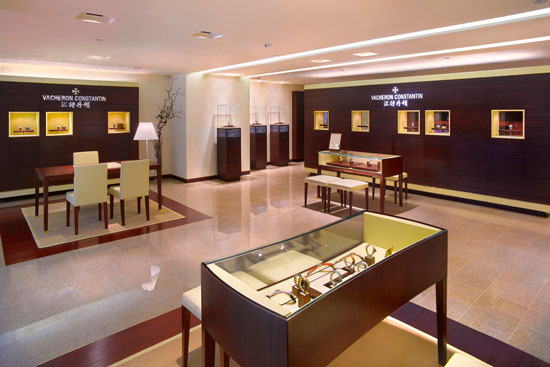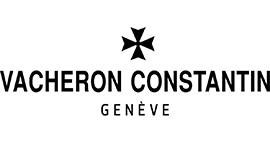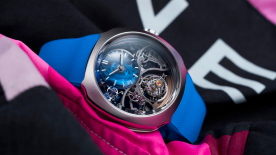Awareness of Vacheron Constantin beyond the cognoscenti is small compared to the likes of Patek Philippe. An aggressive boutique strategy is changing this, says brand boss Juan-Carlos Torres
Unofficially, London now has a Vacheron Constantin boutique. Officially, the Bond Street store will open in the autumn, but between times it’s doing business and – according to its store staff – already starting to shift watches.


For Vacheron Constantin, the boutique is a significant milestone in a strategy designed to take a chunk out of its main rivals – which in London means one thing. ‘The local people here in London are stuck on Patek Philippe,’ suggests Vacheron Constantin’s chief executive Juan-Carlos Torres when asked why he wants a boutique here. ‘But I have to change their mind.’
The model for this process is New York where the brand opened a boutique in late 2011. ‘I’m doing a big job in America,’ Torres continues. ‘I am getting more market share. People are coming from Patek Philippe to Vacheron Constantin. That process has started in London too thanks to the work the team here has done, but the brand has to grow in terms of awareness. I cannot compete with Patek Philippe in London or New York at the moment – but it will come. For now, the idea is not to have turnover here – ok, we have to pay rent and salaries – but to have a window in this country.’

News London was to get a Vacheron Constantin boutique broke last year, but Britain’s capital city had been on the brand’s hit list for some time before then. Securing a retail space in London’s West End is notoriously competitive and for brands with aspirations of dominance, getting to Bond Street is a mission, a rite of passage, you could say.
The boutique itself is modest in size. Measuring little more than 600ft2 (55m2) over two floors, it’s never going to host vast celeb-studded parties and, as Torres says, ‘we’re not expecting big buses of tourists.’ But, he explains, that’s not strictly the point. ‘We expect to have collectors. Real British collectors. There’s a bar downstairs where people can come to talk about Vacheron Constantin over a glass of champagne. In Geneva, twice a year we organize a meeting of our collectors, and we will do the same in London.’
Inside, it’s beautifully fitted out. Vacheron Constantin employed an English joiner to create wall-to-wall oak panelling (using English oak, naturally), watch showcases and shelving for watchmaking artefacts and publications from Vacheron Constantin’s epic archive. On the floor there are burgundy rugs made in Britain – burgundy being a colour the brand believes will appeal to local clientele.
That at least is why the same colour informs the strap of the two-handed Patrimony Traditionnelle London Special Edition watch, a stunning piece that will only be sold in the boutique. Just 20 will be made initially and each features a hand-guilloché dial with a subtle unique Union Jack motif designed for the watch.

Torres’s vision of cutting into Patek Philippe’s share of the market won’t be realised solely by boutiques. He’s eager to point out that for all a boutique strategy might appear to be a threat to his existing network of third party retailers, it’s actually the opposite, and that the two are intended to complement one another.
‘In big cities, in the main capitals, we have to have our own boutiques,’ he says. ‘To have a window and to be a support for the retailers. We create partnerships, not competition.
‘In Paris, we opened a boutique on Place Vendôme 50 metres across from our friend Dubail, the most important retailer in Paris. The idea is that we will help them, for example, with after sales service. And if there are pieces a customer wants and we haven’t got them in the boutique, we will send those customers to Dubail. In New York, I spoke with Wempe, Tourneau and Cellini.’
And then he drops the kind of statistic often used to prove the two retail strategies can work hand in hand. ‘Everywhere we open a boutique,’ he says, leaning forward, ‘we double the turnover of the retailer. Double.’ Breitling, which has also just opened a boutique in London, reports a similar impact with its New York store, incidentally.
Boutiques, Torres says, give customers a place to come and go deeper into a brand. Vacheron Constantin trains its boutique staff for six months before they start work and also employs an in-house watchmaker to work on-site. ‘The idea,’ says Torres, ‘is to catch the real customer.’
The boutique will also give local customers access to Vacheron Constantin’s remarkable custom-order Atelier Cabinotiers service, and to its repairs service – Vacheron Constantin pledges to repair any of its timepieces, no matter how old.
All said, the boutique is good news for Vacheron Constantin’s British collectors and enthusiasts, as well as international visitors to London who Torres expects to make up a significant percentage of trade. But will it prove to be the good news the brand is looking for? If Torres’s strategy works, it could be very good news indeed.
Featured brand







